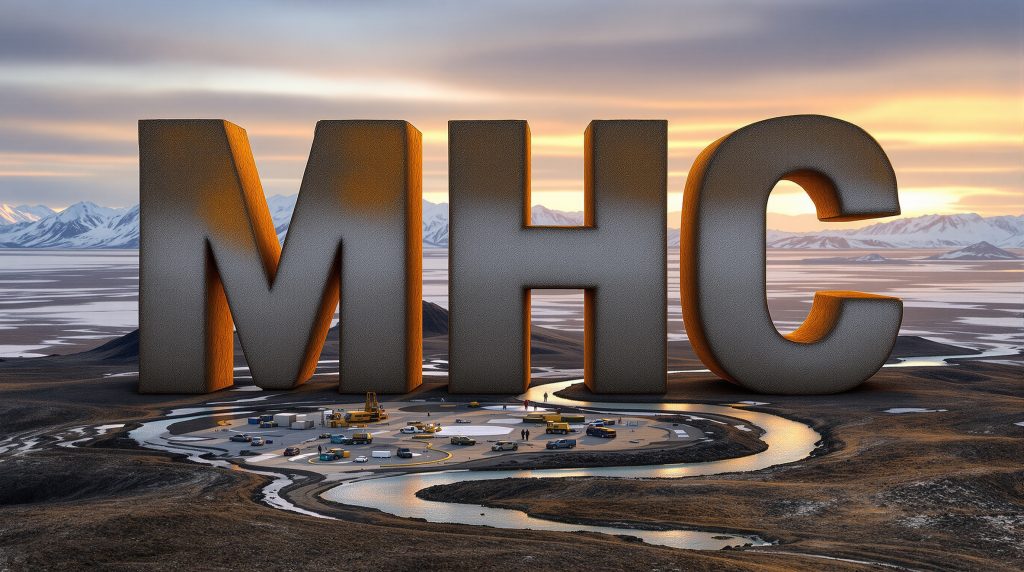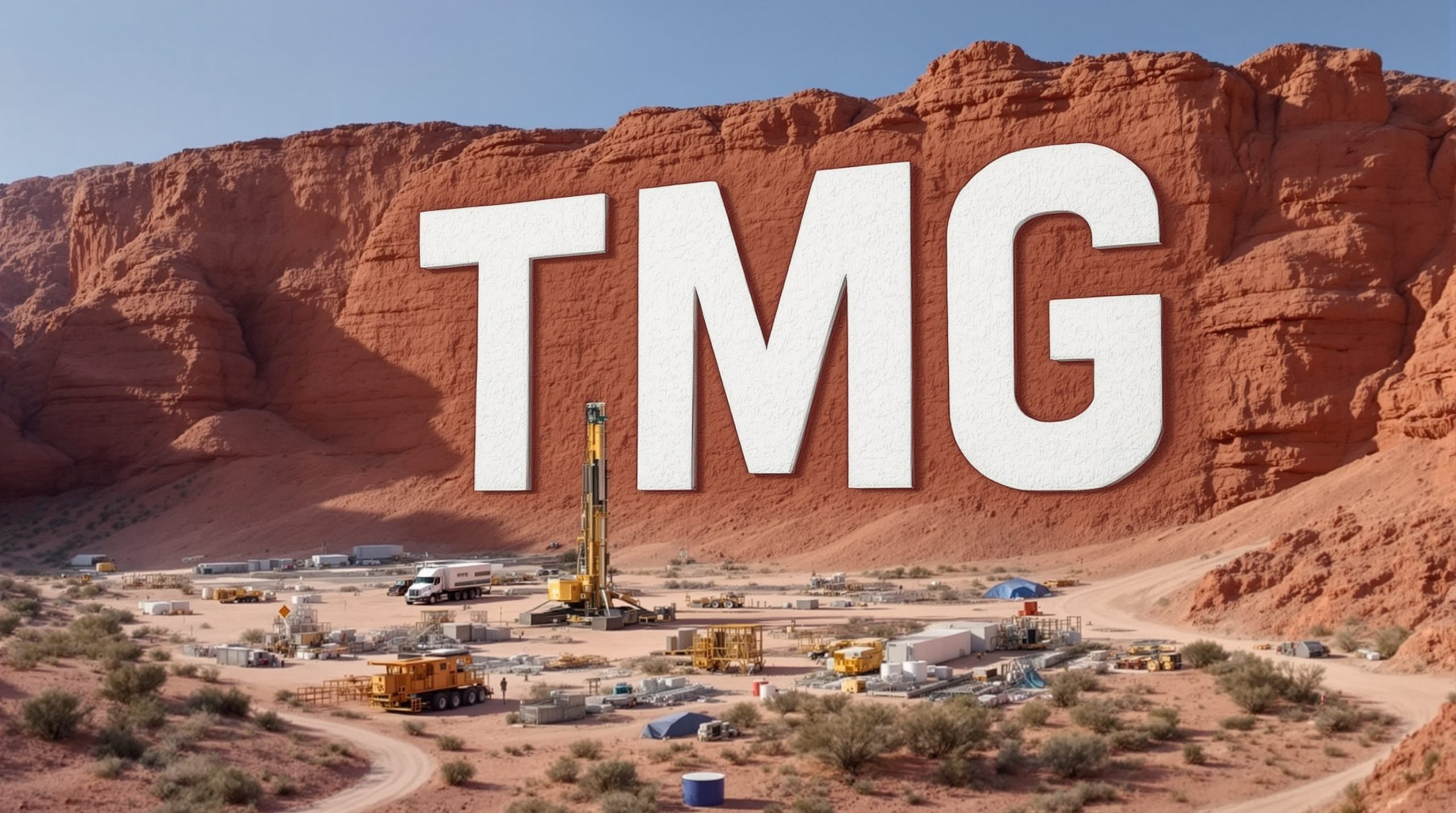Gold Explorer Unveils Multiple New Targets in Promising Canadian Project
Manhattan Corporation Limited (ASX: MHC) has completed its maiden fieldwork programme at the Hook Lake Project in southeastern Nunavut, Canada, discovering extensive mineralized outcrop beyond previously known occurrences and setting the stage for its inaugural drilling campaign in early 2026.
The Hook Lake Project hosts the Jaws high-grade gold deposit (formerly known as Turquetil Lake), which has a historical non-JORC compliant estimate of 3.4Mt @ 2.38g/t Au (~285,000 oz Au). Importantly, this deposit remains open in all directions, suggesting significant exploration upside.
Manhattan CEO Kell Nielsen expressed enthusiasm about the findings: "This initial field programme at Hook Lake confirmed the outstanding potential of the Project for both significant gold and polymetallic VMS discoveries. The Company is excited by the identification of mineralisation hosted within significant shear structures external to and within the known Jaws Deposit."
Key Discoveries Highlight Significant Exploration Potential
The maiden fieldwork program successfully identified multiple high-priority targets across the property:
-
At the Jaws Gold Deposit, sampling confirmed the presence of iron carbonate alteration zones hosting quartz-pyrite-arsenopyrite veins, with samples taken over 194m of strike extent. Notably, veining was observed trending perpendicular to the main zone at the northeastern limits, potentially revealing significant exploration upside similar to recent gold discoveries at Hook Lake.
-
Two new prospective gold vein systems, Quantum and Lotus, were identified 21km southwest of the Jaws Discovery Zone. These systems have not seen historic drill testing and feature banded quartz-sulphide veins sampled over 60m of strike length before being obscured by vegetation.
-
At the Skyfall VMS prospect, located just 10km north of Jaws, the team collected 16 samples from zones of interest containing semi-massive to massive sulphide occurrences with chalcopyrite and sphalerite rich bands.
-
The Spectre VMS system (formerly known as Heninga Lake) was also located, with observations of semi-massive sulphide occurrences. Four confirmatory rock chip samples were collected comprising chalcopyrite and sphalerite bearing massive sulphide taken over 47 metres of strike.
First-Ever High-Resolution Magnetic Survey to Guide Future Exploration
A critical development for the project is the commencement of the first-ever high-resolution fixed-wing magnetic survey over the Hook Lake area. This comprehensive program will cover more than 11,500-line kilometres across the Jaws-Spectre block of exploration tenure, with tighter 100-metre line spacing and 50-metre infill across zones of known gold mineralization.
This survey represents a significant technological advantage over previous exploration efforts, which relied on less sophisticated methods. The resulting data will provide Manhattan with unprecedented insight into the structural controls and potential mineralization across the property.
Understanding Archean Greenstone Belt Gold Deposits
The Hook Lake Project is situated within the Rankin-Ennadai greenstone belt in Nunavut—a geological setting similar to those hosting major gold deposits in the region. Archean greenstone belts in Nunavut host significant gold resources, including the Agnico Eagle-owned Meliadine Mine (6.7Moz Au at 6.12 g/t) and the in-development Back River Gold District (9.2Moz Au at 6.04 g/t).
Gold mineralization at Hook Lake is associated with pyrite and arsenopyrite in zones of quartz-veined, carbonatized mafic volcanics coincident with shear zones. This style of mineralization is well-understood in the region, where gold typically occurs after intense carbonatization, which acted as ground preparation for later gold-bearing hydrothermal fluids.
What are Greenstone Belt Gold Deposits?
Greenstone belts are distinctive geological formations characterized by linear sequences of metamorphosed volcanic and sedimentary rocks that have been altered to green-colored minerals like chlorite and epidote. These formations often host valuable mineral deposits, particularly high-grade gold deposits.
In Nunavut's Archean greenstone belts, gold deposits typically form in association with major structural features like shear zones, which provide pathways for mineral-rich fluids. The gold is commonly found in quartz veins and zones of intense alteration, often accompanied by sulphide minerals like pyrite and arsenopyrite.
These deposits are particularly valuable because they frequently host high gold grades and can extend to considerable depths, making them suitable for long-life mining operations. The geological setting at Hook Lake shares many characteristics with these productive gold systems.
Path to Maiden Drilling in 2026
Manhattan has established a clear pathway toward its inaugural drilling campaign, targeted to commence in April 2026:
- Rock chip assay results expected in September 2025
- Completion of the high-resolution magnetic survey in late 2025
- Integration of historical data with new findings
- Permitting activities already underway
- Community engagement with residents of Arviat for local expertise and labor
The company has also located historical diamond drill core from the Jaws, Spectre, and Defender target areas, found to be in surprisingly good condition given its age. Manhattan is evaluating a potential core resampling program to supplement the planned drilling.
Why Investors Should Follow Manhattan Corporation
Manhattan Corporation presents a compelling investment case for several reasons:
-
Historical Resource with Room to Grow: The Jaws deposit's historical estimate of 285,000 oz of gold at 2.38 g/t provides a solid foundation, with the deposit remaining open in all directions.
-
Multiple Target Types: The project offers both high-grade gold and polymetallic VMS discoveries in Queensland and similar potential at Hook Lake, providing multiple pathways to success.
-
First-Mover Advantage with Modern Techniques: The Hook Lake Project has remained largely dormant since 1988, with Manhattan now applying modern exploration techniques like high-resolution magnetics for the first time.
-
Favorable Geological Setting: Located in the same underexplored Archean Greenstone Belts as multi-million-ounce gold deposits including Meliadine (6.7Moz) and Back River (9.2Moz).
-
Clear Path Forward: With rock chip results expected shortly and a maiden drilling campaign planned for early 2026, Manhattan has established a methodical approach to unlocking the project's value.
-
Infrastructure Development: The project is located in proximity to the proposed Kivalliq Hydro-Fibre Link, a transboundary transmission project that will connect Manitoba's grid to Nunavut's Kivalliq region.
Manhattan Corporation has positioned itself in a gold-rich geological environment with proven potential, applying modern exploration techniques to targets that have seen limited modern work. Furthermore, the company has identified areas with significant exploration upside across both gold and base metal targets, offering investors exposure to a potentially significant Canadian gold story that is just beginning to unfold.
Want to Invest in the Next Major Mineral Discovery?
Discover how ASX investors gain early access to significant mineral discoveries like Manhattan's promising Hook Lake Project through Discovery Alert's proprietary Discovery IQ model, which transforms complex geological data into actionable investment insights. Explore historic examples of exceptional returns from major discoveries by visiting the Discovery Alert discoveries page and position yourself ahead of the market.




